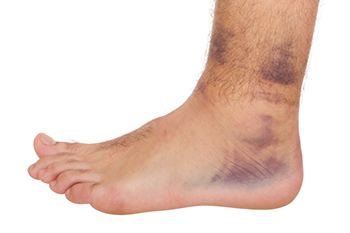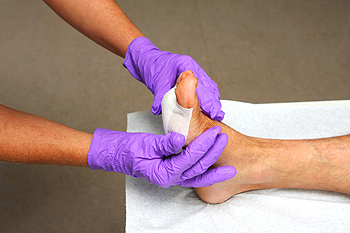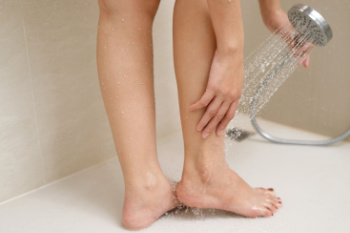Blog
Minor Foot Surgery
 Minor foot surgery encompasses a range of procedures aimed at addressing common foot problems with minimal invasiveness. These surgeries are often performed to correct issues like ingrown toenails, bunions, hammertoes, and plantar warts. Ingrown toenail surgery involves removing part or all of the affected nails to relieve pain and prevent infection. Bunion surgery, or a bunionectomy, involves realigning the bone, ligaments, and tendons to correct the deformity. Hammertoe surgery aims to straighten the bent toe by removing a portion of the bone or releasing the tendon. Plantar wart removal can be performed using various methods, including excision, laser therapy, or cryotherapy. These procedures are typically done on an outpatient basis under local anesthesia, allowing for quick recovery and minimal downtime. If you have any sort of foot problem, it is suggested that you schedule an appointment with a podiatrist. After a thorough examination and imaging tests, the best treatment, which may include minor surgery, will be discussed.
Minor foot surgery encompasses a range of procedures aimed at addressing common foot problems with minimal invasiveness. These surgeries are often performed to correct issues like ingrown toenails, bunions, hammertoes, and plantar warts. Ingrown toenail surgery involves removing part or all of the affected nails to relieve pain and prevent infection. Bunion surgery, or a bunionectomy, involves realigning the bone, ligaments, and tendons to correct the deformity. Hammertoe surgery aims to straighten the bent toe by removing a portion of the bone or releasing the tendon. Plantar wart removal can be performed using various methods, including excision, laser therapy, or cryotherapy. These procedures are typically done on an outpatient basis under local anesthesia, allowing for quick recovery and minimal downtime. If you have any sort of foot problem, it is suggested that you schedule an appointment with a podiatrist. After a thorough examination and imaging tests, the best treatment, which may include minor surgery, will be discussed.
Foot surgery is sometimes necessary to treat a foot ailment. To learn more, contact Shaun J. Limon, DPM and Lisa Griffith-Limon, DPM of Limons Foot & Ankle Care. Our doctors will assist you with all of your foot and ankle needs.
When Is Surgery Necessary?
Foot and ankle surgery is generally reserved for cases in which less invasive, conservative procedures have failed to alleviate the problem. Some of the cases in which surgery may be necessary include:
- Removing foot deformities like bunions and bone spurs
- Severe arthritis that has caused bone issues
- Cosmetic reconstruction
What Types of Surgery Are There?
The type of surgery you receive will depend on the nature of the problem you have. Some of the possible surgeries include:
- Bunionectomy for painful bunions
- Surgical fusion for realignment of bones
- Neuropathy decompression surgery to treat nerve damage
Benefits of Surgery
Although surgery is usually a last resort, it can provide more complete pain relief compared to non-surgical methods and may allow you to finally resume full activity.
Surgical techniques have also become increasingly sophisticated. Techniques like endoscopic surgery allow for smaller incisions and faster recovery times.
If you have any questions please feel free to contact our office located in Lakewood Ranch, FL . We offer the newest diagnostic and treatment technologies for all your foot and ankle needs.
Do Your Child's Feet Hurt?
Foot Structure May Change During Pregnancy

Pregnancy brings about a multitude of changes in a woman's body, and one area that is often overlooked is the feet. Throughout pregnancy, hormonal fluctuations, weight gain, and shifts in the body's center of gravity can significantly impact foot structure. As the body produces hormones like relaxin to loosen ligaments in preparation for childbirth, the arches of the feet may flatten, leading to a condition known as overpronation. This change in foot posture can cause discomfort, instability, and increased strain on the ankles and knees. Additionally, swelling, or edema, commonly experienced during pregnancy can add to foot-related issues. Proper footwear with adequate support and cushioning becomes essential to alleviate discomfort and maintain stability. Regular foot care, including gentle stretching exercises and elevation to reduce swelling, can help diminish the effects of these structural changes. If your feet are uncomfortable during your pregnancy, or you have developed foot pain, it is suggested that you speak to a podiatrist who can help you to find relief.
Pregnant women with swollen feet can be treated with a variety of different methods that are readily available. For more information about other cures for swollen feet during pregnancy, consult with Shaun J. Limon, DPM and Lisa Griffith-Limon, DPM from Limons Foot & Ankle Care. Our doctors will attend to all of your foot and ankle needs.
What Foot Problems Can Arise During Pregnancy?
One problem that can occur is overpronation, which occurs when the arch of the foot flattens and tends to roll inward. This can cause pain and discomfort in your heels while you’re walking or even just standing up, trying to support your baby.
Another problem is edema, or swelling in the extremities. This often affects the feet during pregnancy but tends to occur in the later stages.
How Can I Keep My Feet Healthy During Pregnancy?
- Wearing orthotics can provide extra support for the feet and help distribute weight evenly
- Minimize the amount of time spent walking barefoot
- Wear shoes with good arch support
- Wear shoes that allow for good circulation to the feet
- Elevate feet if you experience swelling
- Massage your feet
- Get regular, light exercise, such as walking, to promote blood circulation to the feet
If you have any questions please feel free to contact our office located in Lakewood Ranch, FL . We offer the newest diagnostic and treatment technologies for all your foot and ankle needs.
Ankle Sprains and Peripheral Nerve Damage
 Ankle sprains, while commonly known for affecting ligaments, can also lead to peripheral nerve damage when the injury is severe. Peripheral nerve damage can occur when the nerves around the ankle are stretched, compressed, or torn during the sprain. Symptoms of peripheral nerve damage from an ankle sprain include tingling, numbness, or a burning sensation in the foot or along the ankle. Some patients might also experience a sensation of “pins and needles.” They may also have a lowered ability to feel touch, pain, or temperature changes. Severe cases can result in a limited ability to walk due to muscle weakness. Proper diagnosis and treatment are important to manage symptoms effectively. A podiatrist, or foot doctor, can use tools like nerve conduction studies to assess the extent of nerve damage. They may suggest various treatments, including targeted stretching techniques to strengthen and restore function and medications that help manage pain and nerve symptoms. To alleviate pain and minimize the risk of chronic ankle pain, it is suggested that you consult a podiatrist for treatment options.
Ankle sprains, while commonly known for affecting ligaments, can also lead to peripheral nerve damage when the injury is severe. Peripheral nerve damage can occur when the nerves around the ankle are stretched, compressed, or torn during the sprain. Symptoms of peripheral nerve damage from an ankle sprain include tingling, numbness, or a burning sensation in the foot or along the ankle. Some patients might also experience a sensation of “pins and needles.” They may also have a lowered ability to feel touch, pain, or temperature changes. Severe cases can result in a limited ability to walk due to muscle weakness. Proper diagnosis and treatment are important to manage symptoms effectively. A podiatrist, or foot doctor, can use tools like nerve conduction studies to assess the extent of nerve damage. They may suggest various treatments, including targeted stretching techniques to strengthen and restore function and medications that help manage pain and nerve symptoms. To alleviate pain and minimize the risk of chronic ankle pain, it is suggested that you consult a podiatrist for treatment options.
Although ankle sprains are common, they aren’t always minor injuries. If you need your ankle injury looked at, contact Shaun J. Limon, DPM and Lisa Griffith-Limon, DPM from Limons Foot & Ankle Care. Our doctors can provide the care you need to keep you pain-free and on your feet.
How Does an Ankle Sprain Occur?
Ankle sprains are the result of a tear in the ligaments within the ankle. These injuries may happen when you make a rapid shifting movement while your foot is planted. A less common way to sprain your ankle is when your ankle rolls inward while your foot turns outward.
What Are the Symptoms?
- Pain at the sight of the tear
- Bruising/Swelling
- Ankle area is tender to touch
- In severe cases, may hear/feel something tear
- Skin discoloration
Preventing a Sprain
- Wearing appropriate shoes for the occasion
- Stretching before exercises and sports
- Knowing your limits
Treatment of a Sprain
In many cases, the RICE method (Rest, Ice, Compression, and Elevate) is used to treat ankle sprains. However, you should see a podiatrist to see which treatment option would work best with your injury. In severe cases, surgery may be required.
It is important to ask your doctor about rehab options after you receive treatment for your injury. Stretching, strength training, and balance exercises may help the ankle heal while also preventing further injury.
If you have any questions, please feel free to contact our office located in Lakewood Ranch, FL . We offer the newest diagnostic and treatment technologies for all your foot care needs.
Wounds That Don't Heal Need to Be Checked
The Many Causes of Swollen Ankles

Swollen ankles can arise from various factors, ranging from genetics to underlying health conditions. It is important to delve deeper into the potential causes of swollen ankles, because they can signal serious underlying health issues. For instance, obesity, diabetes, infections, and venous insufficiency can lead to fluid retention in the ankles, which makes them become swollen. Other serious conditions that can result in swelling in the ankles include congestive heart failure, deep vein thrombosis, and liver or kidney problems. Pregnancy, medications, insect bites, and sprains can also cause the ankle to swell. Prolonged standing or consuming excess salt are other other factors. Depending on the underlying cause, interventions may include lifestyle modifications, medications, or targeted therapies. If you have noticed that your ankles are swelling abnormally, it is suggested that you schedule an appointment with a podiatrist for an accurate diagnosis and personalized treatment plan.
Ankle pain can be caused by a number of problems and may be potentially serious. If you have ankle pain, consult with Shaun J. Limon, DPM and Lisa Griffith-Limon, DPM from Limons Foot & Ankle Care. Our doctors will assess your condition and provide you with quality foot and ankle treatment.
Ankle pain is any condition that causes pain in the ankle. Due to the fact that the ankle consists of tendons, muscles, bones, and ligaments, ankle pain can come from a number of different conditions.
Causes
The most common causes of ankle pain include:
- Types of arthritis (rheumatoid, osteoarthritis, and gout)
- Ankle sprains
- Broken ankles
- Achilles tendinitis
- Achilles tendon rupture
- Stress fractures
- Bursitis
- Tarsal tunnel syndrome
- Plantar fasciitis
Symptoms
Symptoms of ankle injury vary based upon the condition. Pain may include general pain and discomfort, swelling, aching, redness, bruising, burning or stabbing sensations, and/or loss of sensation.
Diagnosis
Due to the wide variety of potential causes of ankle pain, podiatrists will utilize a number of different methods to properly diagnose ankle pain. This can include asking for personal and family medical histories and of any recent injuries. Further diagnosis may include sensation tests, a physical examination, and potentially x-rays or other imaging tests.
Treatment
Just as the range of causes varies widely, so do treatments. Some more common treatments are rest, ice packs, keeping pressure off the foot, orthotics and braces, medication for inflammation and pain, and surgery.
If you have any questions, please feel free to contact our office located in Lakewood Ranch, FL . We offer the newest diagnostic and treatment technologies for all your foot care needs.
Possible Complications of a Broken Ankle

A broken ankle, medically termed ankle fracture, poses significant risks and complications, particularly for active individuals and the elderly. Active individuals are often at risk due to participation in high-impact activities, while the elderly are susceptible due to factors such as decreased bone density and balance issues. One potential complication of a broken ankle is the development of osteoarthritis in the affected joint over time. This occurs due to the disruption of the joint's normal structure and function during the healing process, leading to cartilage degeneration and subsequent pain and stiffness. Elderly individuals, especially those with diabetes, are also prone to complications such as wound healing issues and infections, which can prolong recovery and increase the risk of further complications. Treatment for a broken ankle typically involves immobilization with a cast or brace and pain management. If you have sustained an ankle fracture, it is suggested that you schedule an appointment with a podiatrist who can provide comprehensive care, including monitoring for complications, optimizing rehabilitation, and providing long-term management for optimal foot health.
Broken ankles need immediate treatment. If you are seeking treatment, contact Shaun J. Limon, DPM and Lisa Griffith-Limon, DPM from Limons Foot & Ankle Care. Our doctors can provide the care you need to keep you pain-free and on your feet.
Broken Ankles
A broken ankle is experienced when a person fractures their tibia or fibula in the lower leg and ankle area. Both of these bones are attached at the bottom of the leg and combine to form what we know to be our ankle.
When a physician is referring to a break of the ankle, he or she is usually referring to a break in the area where the tibia and fibula are joined to create our ankle joint. Ankles are more prone to fractures because the ankle is an area that suffers a lot of pressure and stress. There are some obvious signs when a person experiences a fractured ankle, and the following symptoms may be present.
Symptoms of a Fractured Ankle
- Excessive pain when the area is touched or when any pressure is placed on the ankle
- Swelling around the area
- Bruising of the area
- Area appears to be deformed
If you suspect an ankle fracture, it is recommended to seek treatment as soon as possible. The sooner you have your podiatrist diagnose the fracture, the quicker you’ll be on the way towards recovery.
If you have any questions, please feel free to contact our office located in Lakewood Ranch, FL . We offer the newest diagnostic and treatment technologies for all your foot care needs.
It's Time for Beautiful Feet
The Seriousness of Diabetic Foot Ulcers

Diabetic foot ulcers pose a serious risk to those with diabetes, often flying under the radar until they become severe. The condition arises due to poor blood circulation and nerve damage, making it less likely for individuals to notice when their feet are injured. These ulcers typically occur on the soles of the feet or pressure points like the heels and toes, where friction and pressure are high. After a podiatrist removes dead tissue and cleanses the affected area, it is important to keep weight off the foot to prevent further complications and promote healing. Prevention is key, involving daily foot inspections, proper footwear, regular foot hygiene, and blood sugar management. Consulting a podiatrist is essential for diabetic patients to receive specialized care and guidance in preventing and managing foot ulcers. With their expertise, individuals can better safeguard their feet and overall well-being, avoiding the potentially devastating consequences of diabetic foot ulcers. If you have diabetes, it is strongly suggested that you add a podiatrist to your healthcare team.
Wound care is an important part in dealing with diabetes. If you have diabetes and a foot wound or would like more information about wound care for diabetics, consult with Shaun J. Limon, DPM and Lisa Griffith-Limon, DPM from Limons Foot & Ankle Care. Our doctors will assess your condition and provide you with quality foot and ankle treatment.
What Is Wound Care?
Wound care is the practice of taking proper care of a wound. This can range from the smallest to the largest of wounds. While everyone can benefit from proper wound care, it is much more important for diabetics. Diabetics often suffer from poor blood circulation which causes wounds to heal much slower than they would in a non-diabetic.
What Is the Importance of Wound Care?
While it may not seem apparent with small ulcers on the foot, for diabetics, any size ulcer can become infected. Diabetics often also suffer from neuropathy, or nerve loss. This means they might not even feel when they have an ulcer on their foot. If the wound becomes severely infected, amputation may be necessary. Therefore, it is of the upmost importance to properly care for any and all foot wounds.
How to Care for Wounds
The best way to care for foot wounds is to prevent them. For diabetics, this means daily inspections of the feet for any signs of abnormalities or ulcers. It is also recommended to see a podiatrist several times a year for a foot inspection. If you do have an ulcer, run the wound under water to clear dirt from the wound; then apply antibiotic ointment to the wound and cover with a bandage. Bandages should be changed daily and keeping pressure off the wound is smart. It is advised to see a podiatrist, who can keep an eye on it.
If you have any questions, please feel free to contact our office located in Lakewood Ranch, FL . We offer the newest diagnostic and treatment technologies for all your foot care needs.
How to Manage a Pinched Foot Nerve

Pinched nerves in the feet, beyond tarsal tunnel syndrome, stem from diverse conditions, necessitating accurate diagnosis for effective treatment. Both Morton's neuroma, characterized by nerve thickening between toes, and hammertoes, involving abnormal toe bending, can compress nerves. Additionally, bunion formation at the big toe base can crowd and irritate nearby nerves. Nerve entrapment, resulting from injury or structural abnormalities, and peripheral neuropathy, often associated with diabetes, also contribute to nerve compression. Symptoms may encompass tingling, numbness, or burning sensations, affecting mobility and comfort. Precise diagnosis by a podiatrist is important for targeted intervention. Treatment may involve a combination of conservative measures, such as rest, and orthotic devices. In some cases, corticosteroid injections or surgical procedures may be necessary for relief. If you have the symptoms described above, it is suggested that you schedule an appointment with a podiatrist for a proper diagnosis and treatment.
Foot Pain
Foot pain can be extremely painful and debilitating. If you have a foot pain, consult with Shaun J. Limon, DPM and Lisa Griffith-Limon, DPM from Limons Foot & Ankle Care. Our doctors will assess your condition and provide you with quality foot and ankle treatment.
Causes
Foot pain is a very broad condition that could be caused by one or more ailments. The most common include:
- Bunions
- Hammertoes
- Plantar Fasciitis
- Bone Spurs
- Corns
- Tarsal Tunnel Syndrome
- Ingrown Toenails
- Arthritis (such as Gout, Rheumatoid, and Osteoarthritis)
- Flat Feet
- Injury (from stress fractures, broken toe, foot, ankle, Achilles tendon ruptures, and sprains)
- And more
Diagnosis
To figure out the cause of foot pain, podiatrists utilize several different methods. This can range from simple visual inspections and sensation tests to X-rays and MRI scans. Prior medical history, family medical history, and any recent physical traumatic events will all be taken into consideration for a proper diagnosis.
Treatment
Treatment depends upon the cause of the foot pain. Whether it is resting, staying off the foot, or having surgery; podiatrists have a number of treatment options available for foot pain.
If you have any questions, please feel free to contact our office located in Lakewood Ranch, FL . We offer the newest diagnostic and treatment technologies for all your foot care needs.
More...
Heel Pain Can Be Treated!
Foot Health for Runners

Common running injuries such as Achilles tendinitis, plantar fasciitis, and stress fractures can sideline runners and hinder training progress. Achilles tendinitis involves inflammation of the Achilles tendon, often caused by overuse, improper footwear, or inadequate stretching. Plantar fasciitis, characterized by heel pain due to inflammation of the plantar fascia, typically arises from excessive running, poor foot mechanics, or inadequate support. Stress fractures, tiny cracks in bones resulting from repetitive impact, often occur in the feet or lower legs due to sudden increases in training intensity or duration. To prevent these injuries, runners should gradually increase mileage, wear appropriate footwear, incorporate strength and flexibility exercises, and listen to their bodies for signs of overtraining. A podiatrist can provide valuable assistance by assessing foot biomechanics and recommending proper footwear or orthotics. Additionally, these types of doctors can prescribe tailored rehabilitation exercises, and offer guidance on training modifications to prevent recurrence and promote optimal foot health for runners. If you have sustained an injury while running, it is suggested that you schedule an appointment with a podiatrist for a proper diagnosis and treatment.
All runners should take extra precaution when trying to avoid injury. If you have any concerns about your feet, contact Shaun J. Limon, DPM and Lisa Griffith-Limon, DPM of Limons Foot & Ankle Care. Our doctors will treat your foot and ankle needs.
How to Prevent Running Injuries
There are a lot of mistakes a runner can make prior to a workout that can induce injury. A lot of athletes tend to overstretch before running, instead of saving those workouts for a post-run routine. Deep lunges and hand-to-toe hamstring pulls should be performed after a workout instead of during a warmup. Another common mistake is jumping into an intense routine before your body is physically prepared for it. You should try to ease your way into long-distance running instead of forcing yourself to rush into it.
More Tips for Preventing Injury
- Incorporate Strength Training into Workouts - This will help improve the body’s overall athleticism
- Improve and Maintain Your Flexibility – Stretching everyday will help improve overall performance
- “Warm Up” Before Running and “Cool Down” Afterward – A warm up of 5-10 minutes helps get rid of lactic acid in the muscles and prevents delayed muscle soreness
- Cross-Training is Crucial
- Wear Proper Running Shoes
- Have a Formal Gait Analysis – Poor biomechanics can easily cause injury
If you have any questions, please feel free to contact our office located in Lakewood Ranch, FL . We offer the newest diagnostic and treatment technologies for all your foot care needs.
Complications of Bunions

Bunions are bony protrusions that form at the base of the big toe, causing it to lean inward toward the other toes. Bunions often result from a combination of genetic factors, wearing improper footwear, and structural issues in the foot. As the bunion develops, it can lead to pain, inflammation, and difficulty with shoe wear. In severe cases, complications such as bursitis, hammertoes, or even arthritis may arise due to the altered foot mechanics. If you have a bunion that is causing significant discomfort and interfering with your daily activities, it is suggested that you schedule an appointment with a podiatrist who can offer you various treatment options.
If you are suffering from bunions, contact Shaun J. Limon, DPM and Lisa Griffith-Limon, DPM of Limons Foot & Ankle Care. Our doctors can provide the care you need to keep you pain-free and on your feet.
What Is a Bunion?
A bunion is formed of swollen tissue or an enlargement of boney growth, usually located at the base joint of the toe that connects to the foot. The swelling occurs due to the bones in the big toe shifting inward, which impacts the other toes of the foot. This causes the area around the base of the big toe to become inflamed and painful.
Why Do Bunions Form?
Genetics – Susceptibility to bunions are often hereditary
Stress on the feet – Poorly fitted and uncomfortable footwear that places stress on feet, such as heels, can worsen existing bunions
How Are Bunions Diagnosed?
Doctors often perform two tests – blood tests and x-rays – when trying to diagnose bunions, especially in the early stages of development. Blood tests help determine if the foot pain is being caused by something else, such as arthritis, while x-rays provide a clear picture of your bone structure to your doctor.
How Are Bunions Treated?
- Refrain from wearing heels or similar shoes that cause discomfort
- Select wider shoes that can provide more comfort and reduce pain
- Anti-inflammatory and pain management drugs
- Orthotics or foot inserts
- Surgery
If you have any questions, please feel free to contact our office located in Lakewood Ranch, FL . We offer the newest diagnostic and treatment technologies for all your foot care needs.
Complete Foot Care

Maintaining healthy feet is essential for overall well-being. An easy foot care routine combines at-home care with professional guidance from a podiatrist. Start with regular at-home pedicures, soaking feet in warm water with Epsom salts to soften skin, followed by gentle exfoliation and moisturizing to prevent dryness and cracking. Trim toenails straight across to avoid ingrown nails and file them smooth. Seeing a podiatrist is equally important for comprehensive foot health. Regular check-ups with a podiatrist can detect early signs of issues like bunions, corns, or fungal infections. A podiatrist can also provide personalized advice on proper footwear, foot exercises, and preventive measures. If you want to invest time into taking proper care of your feet, it is suggested that you schedule an appointment with a podiatrist for thorough foot maintenance and early intervention for any underlying conditions.
Everyday foot care is very important to prevent infection and other foot ailments. If you need your feet checked, contact Shaun J. Limon, DPM and Lisa Griffith-Limon, DPM from Limons Foot & Ankle Care. Our doctors can provide the care you need to keep you pain-free and on your feet.
Everyday Foot Care
Often, people take care of their bodies, face and hair more so than they do for their feet. But the feet are a very important aspect of our bodies, and one that we should pay more attention to. Without our feet, we would not be able to perform most daily tasks.
It is best to check your feet regularly to make sure there are no new bruises or cuts that you may not have noticed before. For dry feet, moisturizer can easily be a remedy and can be applied as often as necessary to the affected areas. Wearing shoes that fit well can also help you maintain good foot health, as well as making it easier to walk and do daily activities without the stress or pain of ill-fitting shoes, high heels, or even flip flops. Wearing clean socks with closed shoes is important to ensure that sweat and bacteria do not accumulate within the shoe. Clean socks help to prevent Athlete’s foot, fungi problems, bad odors, and can absorb sweat.
If you have any questions please feel free to contact our office located in Lakewood Ranch, FL . We offer the newest diagnostic and treatment technologies for all your foot and ankle needs.




